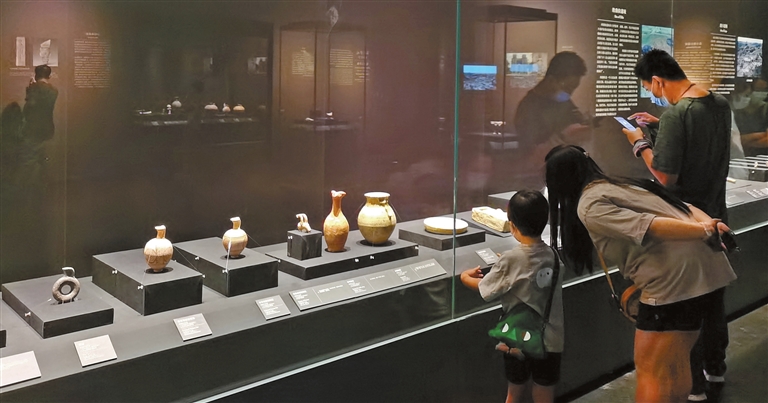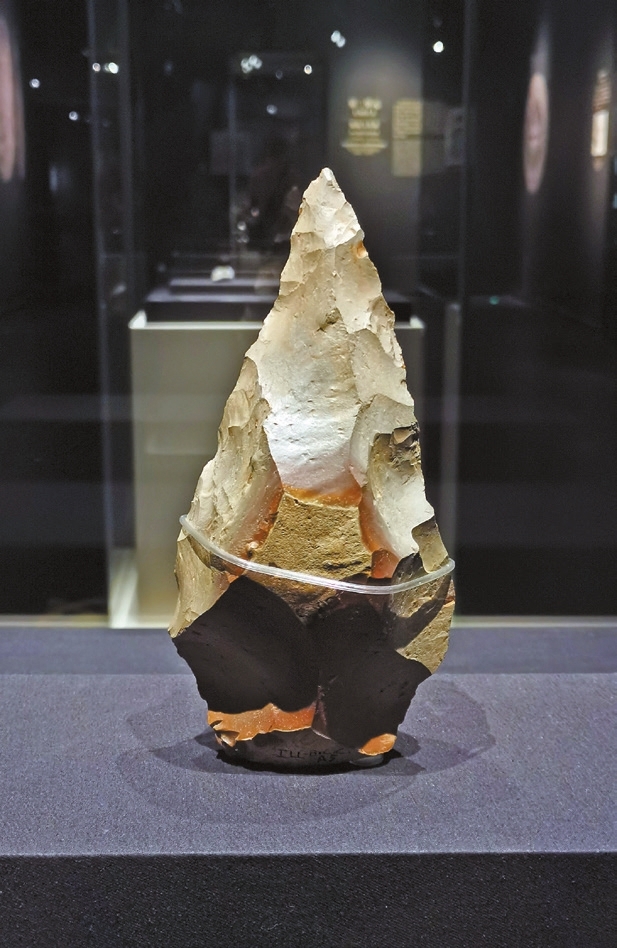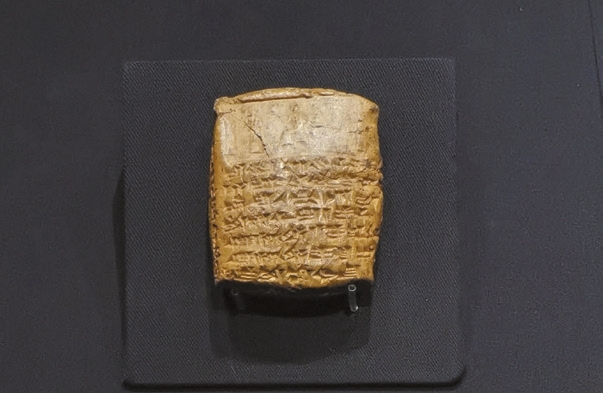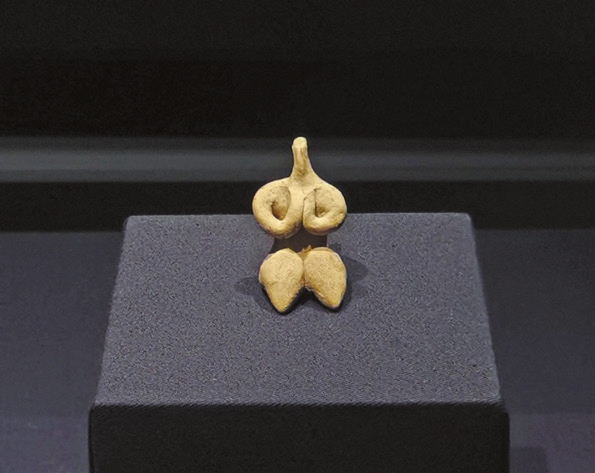



Cao Zhen caozhen0806@126.com YEARS of warfare and turbulence cannot dim the glory of the history and civilization of Syria, a West Asian treasure trove with thousands of historical sites. Now Shenzheners can admire rarely seen Syrian relics at the newly opened “Incredible Syria” exhibition at the Nanshan Museum. The exhibits, having made a winding journey to Shenzhen, are from nine Syrian museums, including the National Museum of Damascus, the Aleppo Museum and the Deir ez-Zor Museum. Three Chinese organizations, the Dunhuang Research Academy, the Xinjiang Uygur Autonomous Region Museum and the Xi’an Beilin Museum, are also displaying several items in a section featuring the exchanges between China and Syria on the Silk Road. The Syrian artifacts are displayed into time spans: the Stone Age (500,000 years ago to 3100 B.C.), the Ancient Syria (3100-333 B.C.), the Classical Age (333 B.C.-A.D. 636) and the Islamic Art (636-1923) sections. Paleolithic sites uncovered in Syria show that early in time, it was already peopled. The primitive relics of the Paleolithic period in Syria feature chopping tools and hand axes; the middle period was characterized by stone flakes; stone sculptures and blades appeared in the late period. A stone axe at the exhibition gives a glimpse of prehistoric stone tools, which possess a combined sense of simplicity and beauty beyond description. Syrian people in the late Neolithic period produced exquisite pottery items. A clay female figurine exhibit belonging to the Halaf culture displays a strong stylization with an emphasis on the sexual features. She sits with her large thighs extended, supporting her breasts with her arms; neither hands nor feet are shown and her head is missing. The meaning of such representations is unknown but may be connected with fertility. The Ancient Syria section includes art of the Bronze (3100-1200 B.C.) and Iron (1200-333 B.C.) ages. A number of exhibits are from three of the most important archaeological sites: Ebla, Mari and Ugarit. One famous exhibit is a clay tablet with cuneiform text that was found in Ugarit. Although it is not the oldest alphabet in the Near East, the writing system was crucial to the development of an alphabet by the Phoenicians a few centuries later and ultimately provided the basis for modern Western alphabets. In addition to writing, more carving items, pottery and sculptures saw unprecedented development, and artistic creation reached its heyday during the Bronze and Iron ages. As an area connecting West Asia with the Mediterranean Sea, Syria had trade relations with neighboring Anatolian (Asia Minor), Mesopotamian and Egyptian people in the late Neolithic period. Various parts of Syria had also been battle grounds for various foreign empires, including the Akkadian, Assyrian, Babylonian, Achaemenid, Egyptian, Greek-Macedonian, Roman and Byzantine empires and Asia Minor kingdoms, and the archaeological evidence from Syria’s ancient civilization demonstrates the mutual influence between it and the world. At the exhibition, visitors can observe an array of Assyrian reliefs, which were finely crafted and show special attention to detail. The reliefs were first used by a king in about 883-859 B.C. and the tradition was maintained in royal buildings. The architecture and relief art of Assyrian palaces exerted a profound impact on Syria. In the Hellenization by Alexander the Great when Syria was ruled by the Greeks (333-64 B.C.), pottery and glassware manufacturing thrived and metal smelting technology advanced as a consequence of the integration of Greek and Syrian cultures. Under the Roman (64 B.C.-A.D. 395) and Byzantine (395-636) rules, linen products, Damascus alabaster, limestone products, copperware and glassware were well developed. And when the Arabs took control of Syria, art in this period was vibrant and distinctive and the Syrians made great contributions to the Arab-Islamic culture in many fields, such as poetry, literature, philosophy and language. Exhibiting Syrian ancient artifacts in China was planned after the Conference on Dialogue of Asian Civilizations in Beijing in 2019, according to China News Weekly. At the conference, Chinese President Xi Jinping said, “Diversity spurs interaction among civilizations, which in turn promotes mutual learning and their further development.” The “Safeguarding the Diversity of Asian Civilizations” panel during the conference also stressed the importance of cultural interactions among Asian peoples and revitalizing Asian civilizations. Since Syria is home to one of the oldest civilizations in the world, with a rich artistic and cultural heritage, the Art Exhibitions China, a State-owned organization under China’s National Cultural Heritage Administration, contacted Syria’s Directorate-General of Antiquities and Museums for exhibition collaborations after the conference, the China News Weekly reported. Syria’s directorate-general then asked nine museums in its country to lend the exhibits, many of which had to be repaired due to years of wars. Dates: Until Nov. 7 Hours: 10 a.m.-5 p.m., closed Mondays (Saturdays also open at 6-9 p.m.) Tickets: Free Booking: WeChat account “nanshanmuseum” Venue: Nanshan Museum, Nanshan District (南山区南山博物馆) Metro: Line 1 to Taoyuan Station (桃园站), Exit B | 
